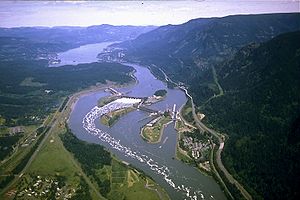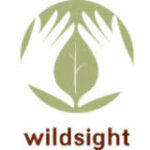WALKING THE WALK: Down on Kerby's farm
Thirty-five years ago, Bob and Judy Kerby purchased a house on a 11-acre farm overlooking Rossland’s picturesque Happy Valley. Judy, who hailed from Vancouver, had always dreamed of having a farm and living a sustainable lifestyle, and the spot they found boasted an orchard of 80 fruit and nut trees planted back in 1916 and a house built to take advantage of a natural spring flowing down the side of the hill. Now Kerby’s Farm is one of Rossland’s paragons of sustainable living and the couple walk the walk of the localvore movement.
“At one point we had gotten to the point where we were pretty well self-sufficient,” Bob told me, citing flour, salt, rice and oatmeal as the only staples they required from a store. “Other than that we were completely self sufficient in meat, vegetables, fruit, and nuts.”
As idyllic as the setting and lifestyle might seem, however, Bob and Judy are quick to emphasize some of the challenges inherent in their sustainable lifestyle.
“You can’t be sustainable anymore without having an income. The world has changed. Nowadays, everyone wants taxes, they want money for health care – you need to have cash. The funny thing is the government has come along and said you can’t sell stuff at the farm gate, so you can’t pick up cash anymore to sustain yourself.”
Indeed, government regulations regarding the selling of farm products has severely limited the Kerby’s ability to remain independent of the mainstream food supply system.
“On the one hand everyone is wanting all of a sudden to eat locally and eat organic and have this community-sustained agriculture, just at the same time the government comes in and says you can’t do anything,” Judy told me.
They face heavy fines if they sell any meats from their farm that have not been slaughtered and inspected at federally inspected meat slaughtering facility. “It costs you something like $500 to get it inspected and it costs you another $500-1000 to get it slaughtered and butchered. By the time you do all that there is no profit for the farmer. He can’t make anything from it,” Bob said.
The nearest meat inspection station is in Creston, and because the process is too cost prohibitive, the Kerbys have had to get out of cows and into smaller livestock that they can slaughter on their own. These animals provide them with just enough meat for themselves. Other residents in the valley have also had to let go of larger livestock, like sheep, because of these regulations. And there is a trickle down effect to this, too: feed suppliers, hay bale makers, and other service providers like artificial inseminators lose business and become few and far between for small farmers living in more out-of-the-way places.
Enter the Nigerian Dwarf Goat – from Armstrong, BC! Judy believes that this German Shepherd-sized goat, with its blue eyes with and curious rectangular irises, could be the future of sustainable living in residential areas. These animals are quiet, can be kept in back yards and converted garages, and Judy says they can possibly licensed as pets the same way dogs are, so municipalities can generate some income through licensing, and so that neighbours have some assurance that owners are susceptible to animal bylaws.
The does are actually smaller than the bucks, about the size of a Cocker Spaniel, and Judy reckons they are less smelly than a dog. Having two little does will produce enough milk for a family each day–approximately two litres!
Getting back to the financial sustainability of “walking the walk” Bob stresses that “if someone were to come here to Rossland and say, ‘I’m going to be sustainable’, the first thing they’d have to do is lay out a couple hundred thousand to buy the property, to even do it in, which completely stops it right there. But once they’ve done that, then they end up paying taxes, which is again very difficult.” The Kerbys’ farm is now just over seven acres; years ago, they sold the part of the property where they had been assessed 25 frontages because the city charged them $250 per frontage.
The financial aspect of sustainable living mixes with the government regulation and tax issues in such a complex manner that it all becomes one giant vicious circle.
Bob told me, “I don’t know if it’s realistic to expect anyone to be completely sustainable; it’s almost impossible. But people can at least make an attempt at it. If you’re going to plant a shade tree, why not plant a walnut tree? Because then you get something from it. By watching what you set yourself up for, at least you are putting stuff in that is sustainable.”
Both Bob and Judy say that it’s their passion for sustainability that keep them motivated. They frequently have young people coming to them with their questions about farming, gardening, and sustainable living, so this couple are now mentoring a new generation of up-and-coming sustainavores. In this age of big box stores and oil spills, that inspiring passion, coupled with their hard-earned knowledge, are valuable legacies indeed.
Check out a special gallery of photos from the Kerby farm here.
This is the first of an occasional series for the Telegraph called Walking the Walk. Walking the Walk will feature local people who are actively pursuing a sustainable lifestyle in their own unique ways. If you know someone in town who might be a good fit for this series, drop us a line and let us know!


























